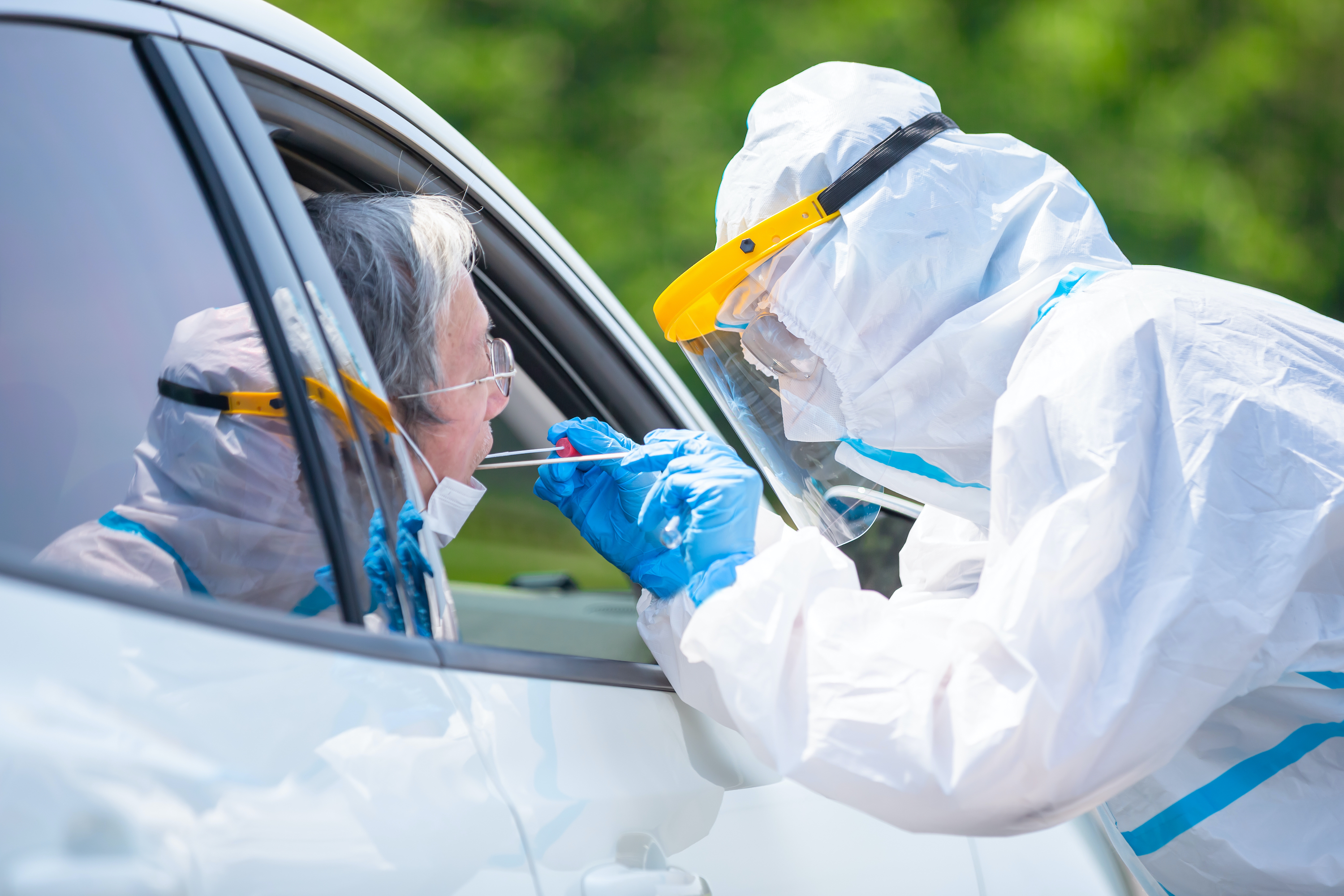One of the facts that the COVID crisis has brought out in sharp relief is that within society we routinely expect some people to take greater risks on behalf of the rest of us. During normal times, construction workers, police, fire officers and others subject themselves to a higher level of risk for the sake of the rest of society. At the time of the COVID crisis, particularly during periods of lockdown, most of us are remaining at home, where we’re relatively safe, and others are, for various reasons, taking on a much higher level of risk than they would normally do. This raises an important question about the fair distribution of risk and why should it be that some people are taking high risks? What should we do about it? During the crisis, frontline health workers, social care workers, people serving in shops, delivering parcels or driving buses are all subject to much higher possible risks of infection. As a society, it is important to think about this from a moral and political point of view. How should we allocate risk? What should we do for those people who are subjected to a higher level of risk for the sake of the rest of us?
How we distribute risk within society
Alfred Landecker Professor of Values and Public Policy
- It is important to think about the moral and political aspects of the way in which we distribute risk within society. What are we doing for those who are subjected to a higher level of risk for the sake of the rest of us?
- The social contract theory allows us to think of fair distribution of risk by compensating those who run higher levels of risk and may suffer harm because of it.
- Vaccination itself may not rid society of the health risks posed by the pandemic. We may still need to continue all safety measures so as not to put others at risk.
Unequal risk distribution

Photo by pixfly
The role of consent in risk-taking
Philosophers have approached the question of risk from a number of different viewpoints. One important point is that, really, no one should be subjected to a risk unless they consent to it; unless the risk exposure has, in some sense, our own approval. This sounds very sensible, very intuitive. Why should you allow me to put you under risk if you don’t agree? This is a type of ‘rights against risk’ view – that we all have a right not to be subjected to risk unless we consent. The trouble with this view is that it would completely paralyse society. For example, if I drive my car, I’m subjecting not only myself but everyone around me to a heightened level of risk. Even if I go for a walk, I am subjecting some people to a higher level of risk, particularly now as I might be infected; but, even in normal times, I might lose my concentration, I might slip over and pull someone else down with me. All of life involves subjecting others to risk. So, this pure theory that unless you consent to a risk you shouldn’t be subjected to it is a non-starter. We have to accept that there will be risks which are part of our normal life that we cannot control.
Compensating those harmed by risk
Some philosophers say that it is best to take the focus away from risk and understand the harm caused to people. When people suffer, then they should be compensated, but we should not worry too much about risk. We can do whatever we want as long as we compensate those harmed afterwards. This is an extreme viewpoint, which is a lot like letting people drive at 90 miles an hour down the high street and only compensating the people that they run over. What we, as a society, really want to do is to control risk. We don’t want to allow behaviour that causes fear in people, even if it does not cause harm. So, part of the point of regulating risk is to reduce fear, not only harm. The idea of compensating those harmed by risk does not work well.
Cost-benefit analysis of risk

Photo by aslysun
One philosophy of risk has emerged out of rather naive economic thinking. It says that we should use a type of cost-benefit analysis that allows people to impose risks on others as long as the benefits of those risks are higher than the costs or the harm. In a way, this is what we are currently witnessing during the pandemic by allowing food delivery drivers to take risks on our behalf, for example. It is a relatively small risk for them and they are saving us from much larger risks. On this type of cost-benefit analysis, we should allow, or even require, people to run risks as long as it reduces the overall risk in society. It is not a stupid view. If the costs were higher than the benefit, why would we take the risk at all? We do want the costs to be lower than the benefit. Yet, the trouble with this view is that it doesn’t really look at the question of how the costs and the benefits are distributed. The costs are falling on the delivery drivers and the frontline health workers. I am getting the benefit. You are getting the benefit. But that seems unfair. Why should some people run a risk for the sake of others? Unless they are altruistically minded, of course, which some people are.
Reducing and regulating risk for the good of all
Of the different theories of risk, I prefer the social contract theory. This theory gets you to think about the question: how would you like risk to be regulated if you didn’t know whether you were running those risks or not? Think about society now. There are health workers and delivery drivers. Think of your own position and imagine that you are going to be allocated into your position in society.
This theory is an adaptation of American political philosopher John Rawls’s views and writings in the 1970s and 1980s, particularly of his idea of the veil of ignorance. How would you choose the risks if you didn’t know what position you had? Think about a frontline health worker. If you didn’t know if you were going to be one, how would you want the risks associated with that job to be regulated? You might say that the first thing you would want to do is to reduce the risk as much as possible. So, that would mean having very good PPE, and being first in line for the vaccine when it comes along. You might think you would require a higher wage, and if you got ill, you should be among the first in line to be treated. You would say that if these risks have to be run, then we have to reduce them as much as we can. Reasonably, we have to compensate people for running them. We also have to compensate people if they suffer from harm eventually. This type of social contract theory draws on the other theories and provides a way of thinking about the fair distribution of risk.
Managing risk during the pandemic
If the social contract theory of risk is the correct theory, how well are we doing in contemporary society at the moment, even today? Think about nurses, for example. Nurses on the front line bear a huge risk of infection, more so than doctors, as they are with patients more of the time. What are we doing for the nurses? Did we increase their wages? No, we did not. What we did, in the UK, was give them a round of applause every Thursday. This really was the politics of gesture rather than realising that the rest of us have an extra obligation. The rest of us should have been prepared to pay a little bit more in taxes so that the nurses got more compensation for the risks and the extra work that they were running.
What about PPE? That was pretty dreadful. At least in the initial stages, many nurses were using inadequate forms of protection. If the allegations are correct, some governments, particularly in the UK, were using procurement as a way of funnelling contracts to political allies and supporters rather than preparing in advance for what was not an unlikely event – a pandemic needing a specific type of protection for nurses and other frontline workers. It is better now, but we failed in our duty.
The third thing we could be doing is putting frontline health workers first in line for vaccination. We are doing that. Why are we doing that? It is for complicated reasons, one of which is because we realise that the nurses are subject to a higher level of risk and they deserve a type of compensation – but it is also to keep them at work by stopping them getting sick so that they are there to help us. So, in a way, we are giving the vaccine first to frontline health workers for our sake as much as theirs.
A post-vaccine future

Photo by Mongkolchon Akesin
Many of us hope that once we receive the full dose of the vaccine we will not get the disease and we won’t be able to pass it on. The understanding is that the vaccine gives us a type of immunity, which allows us to behave pretty much as we would normally. It is not clear that that is going to happen. No vaccine is 100% successful, so some people who are vaccinated will still fall ill. We also don’t know for sure if the vaccine stops us from passing the virus on to others. The vaccine can stop us from getting ill, but it may not stop us from infecting other people.
I think we have a type of false hope for the vaccinations that it is going to be the magic that brings everything to an end. Unfortunately, it probably won’t, and we will continue to have to take other measures as well. I think that the moral issues here are the ones around communication, because one of the most dangerous things in life is to believe that we are safe. If we believe that we are safe, we stop taking other precautions.
Imagine a frontline health worker who gets a vaccination and now believes that she is immune. She might stop washing her hands; she might stop wearing a mask; she might not worry about who she is breathing over. That way, she can be a massive danger to others simply because of the false belief of safety. It is critically important for all of us to understand the level of risk that we still impose on others and to not believe that the vaccination makes everything go away.
Discover more about
risk during times of crisis
Wolff, J. (2015). An Introduction to Political Philosophy (3rd ed.). Oxford University Press.
Wolff, J. (2006). Risk, Fear, Blame, Shame and the Regulation of Public Safety. Economics and Philosophy, 22(3), 409–427. Cambridge University Press.
Madeleine, H. and Wolff, J. (2011). The Moral Problem of Risk Imposition: A Survey of the Literature. European Journal of Philosophy, 20 (S1), E26-E51.